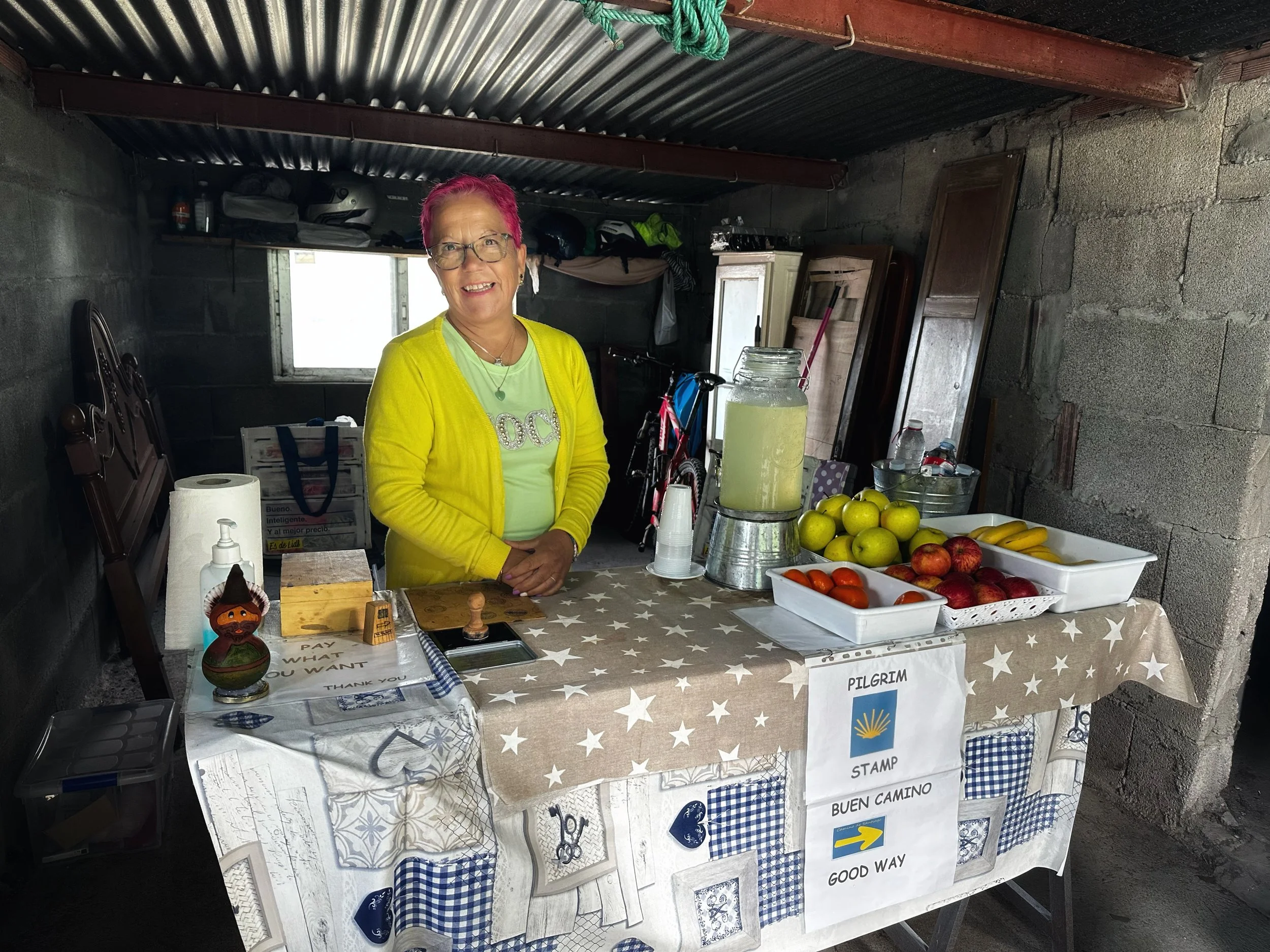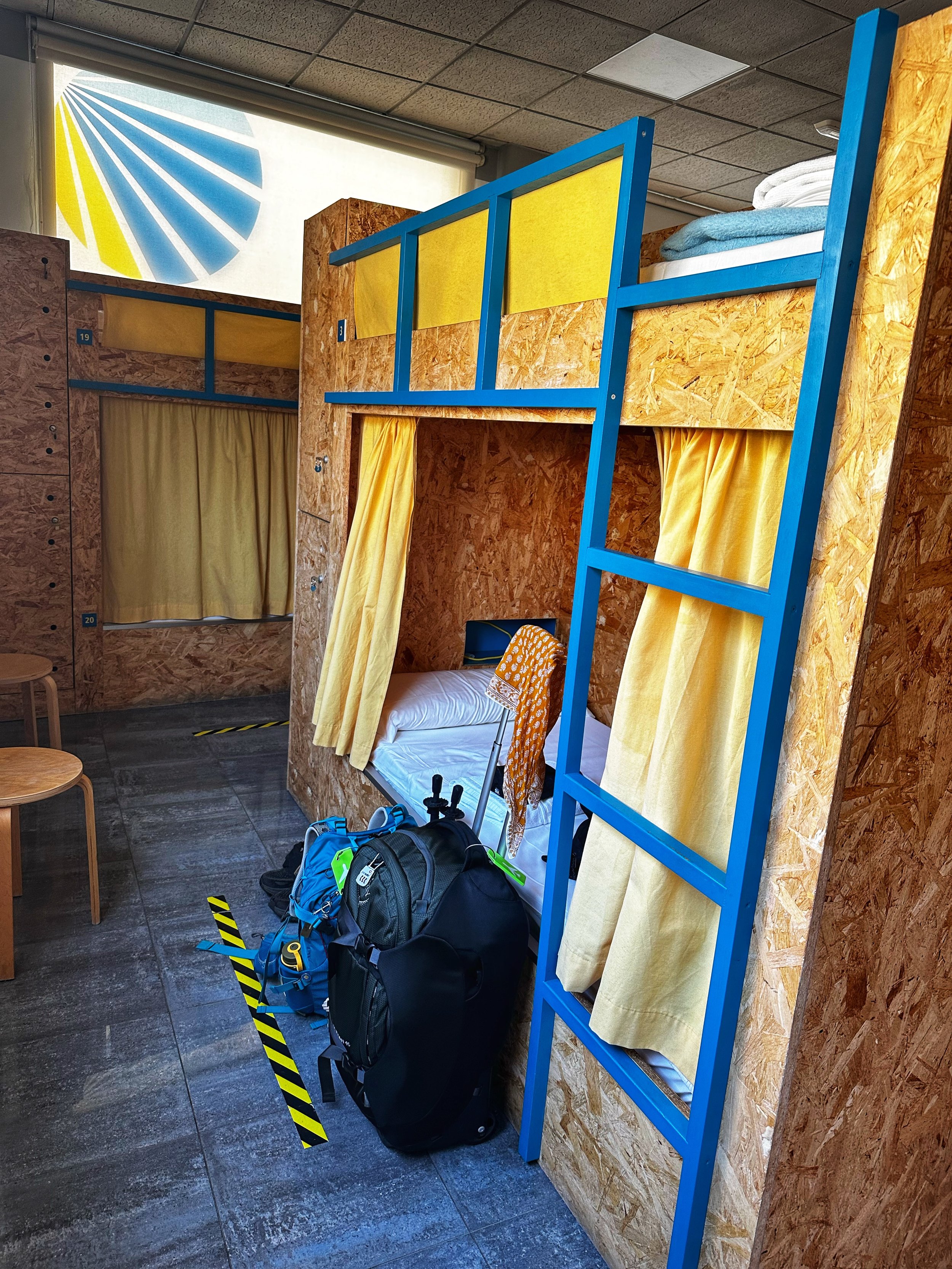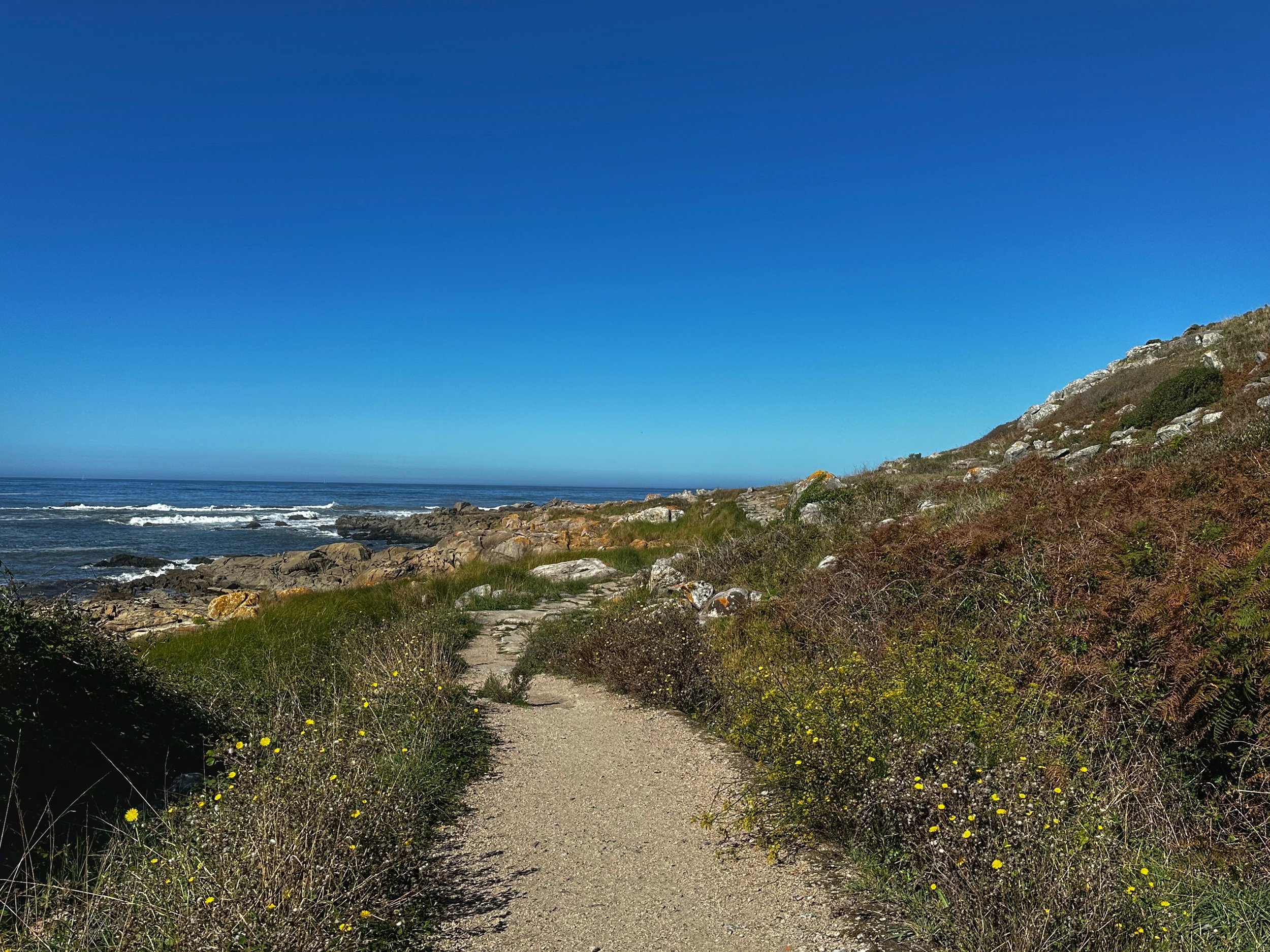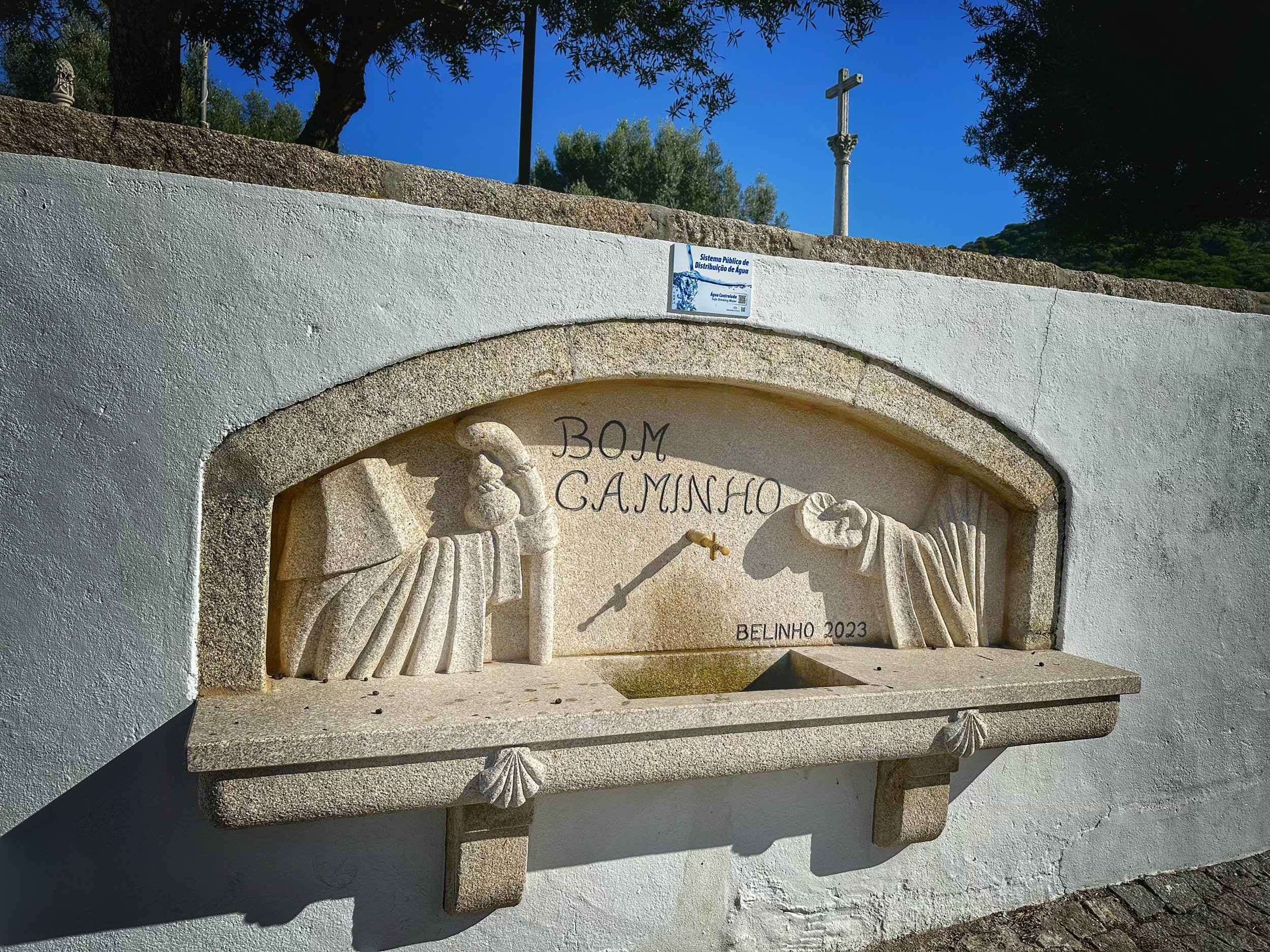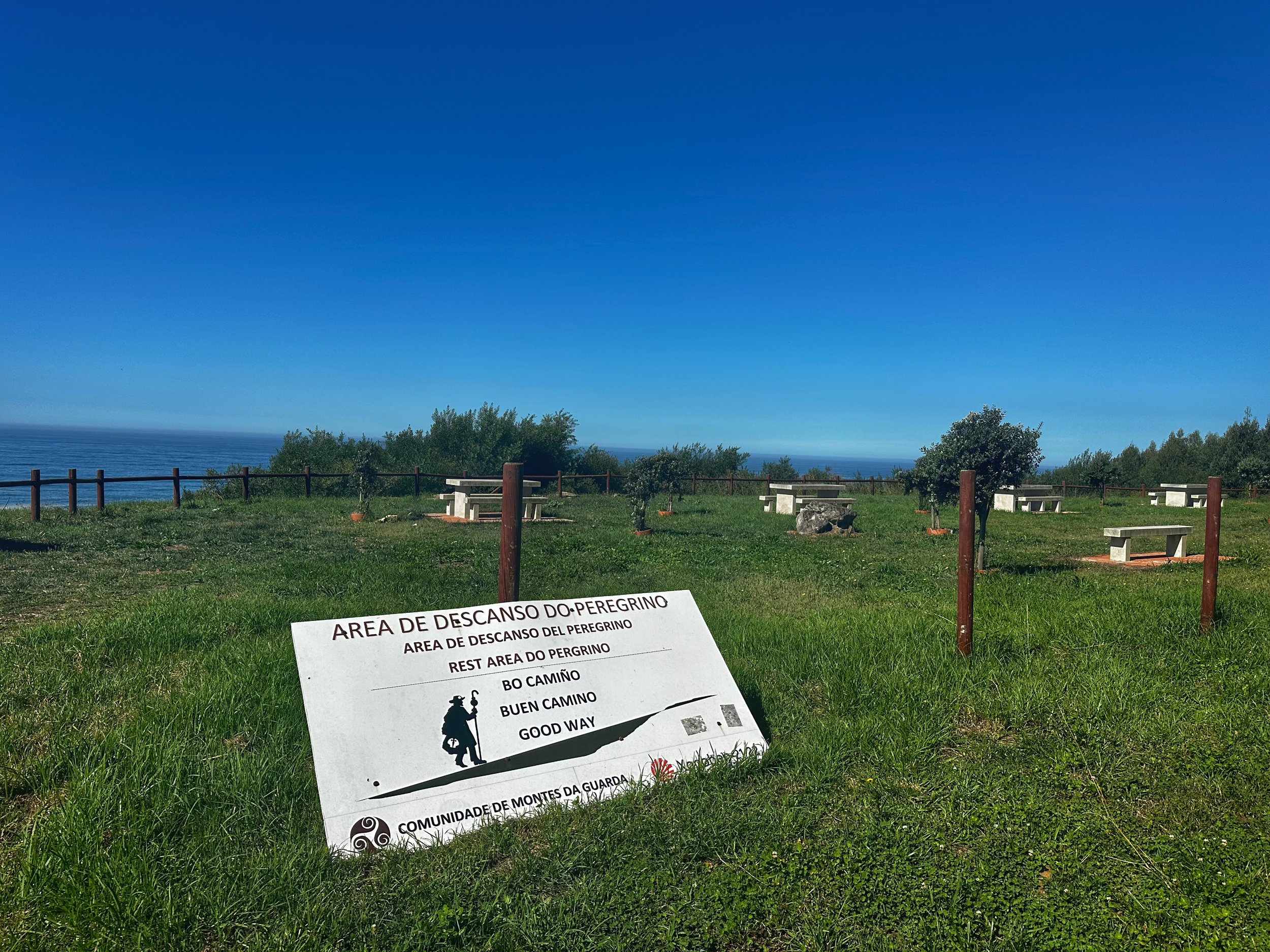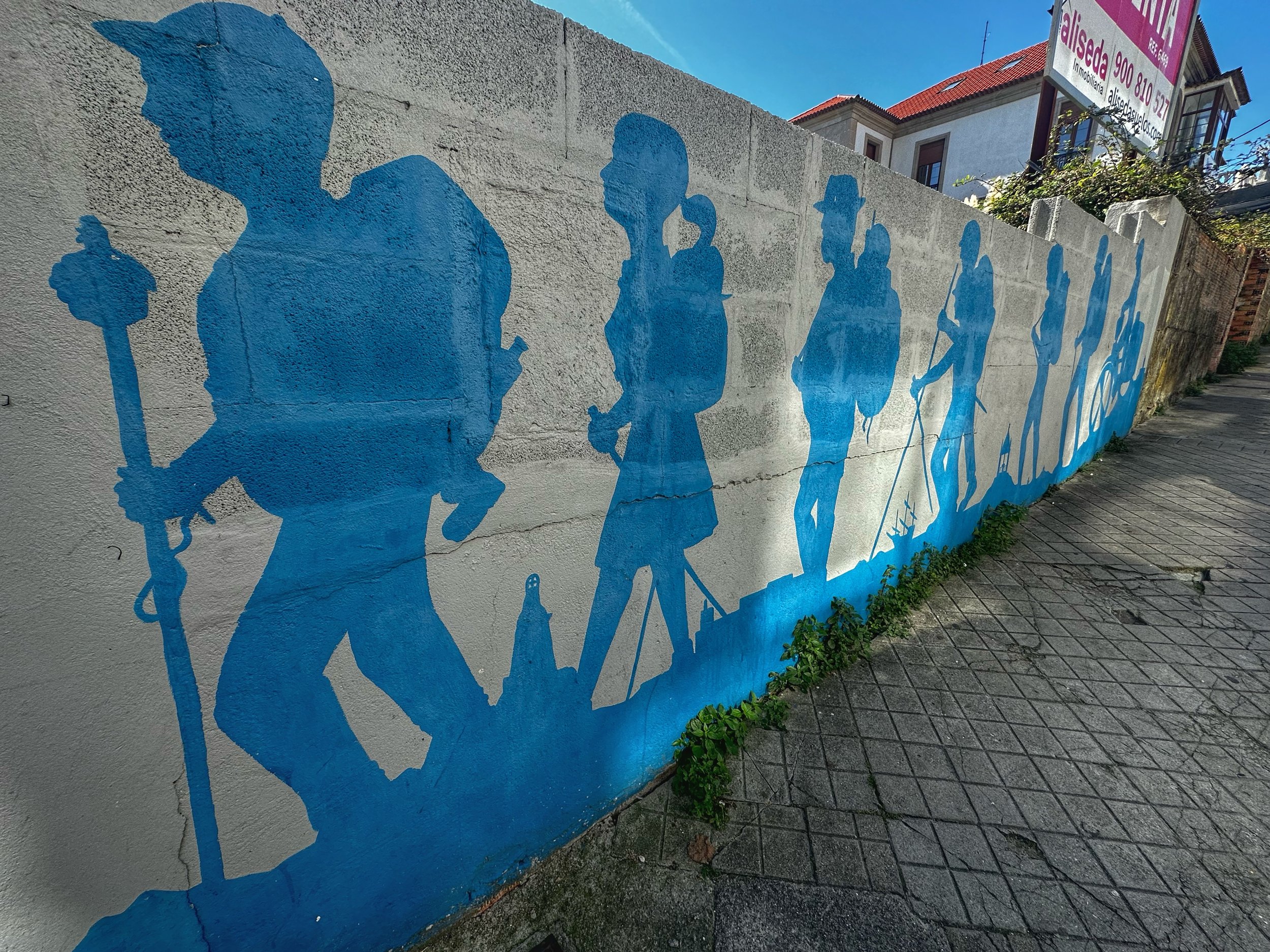A Story to Carry Us Home
“I don’t know exactly what a prayer is. I do know how to pay attention, how to fall down into the grass, how to kneel down in the grass, how to be idle and blessed, how to stroll through the fields, which is what I have been doing all day. Tell me, what else should I have done? Doesn’t everything die at last, and too soon? Tell me, what is it you plan to do with your one wild and precious life?”
Today is a good day for an ancient story.
Do you know the celebrated history of the Camino de Santiago, which I’ll be walking for three weeks from Portugal into Spain? The Camino is not a singular road but instead a series of seven main footpaths including the Portuguese Coastal route that I’ll be following – with some notable detours and side paths – all of which converge on the town of Santiago de Compostela in Spain. For those unfamiliar with the lore, let’s venture for a moment down the rabbit hole of antiquity, back to pre-Medieval times, to suss out the who/what/when/where/why of this mystic pilgrimage.
Translated to English, Camino means the pathway (or the Way, for short); de means, among other things, of or from; and Santiago is the present-day iteration of the moniker Saint James (or Sant Iago in Spanish which, elided, becomes Santiago). Hence, the Camino de Santiago is the Way of St. James. Santiago – or, more specifically, Santiago de Compostela – is also a place: the town in northwestern Spain, in the region of Galicia, where the various pathways of the Camino end. Translated directly, Santiago de Compostela means St. James in a Field of Stars (Compostela being an evolution of the Latin words campus/field and stellae/star).
Christian tradition holds that St. James and his brother John, cousins of Jesus (their mothers were sisters), were called by Christ to follow him as they worked alongside their father, a fisherman, on the Sea of Galilee. Jesus had already called another pair of brothers, Peter and Andrew, from a similar profession, and together these four formed the foundation of what would become the Twelve Apostles. After Christ’s crucifixion, when the Apostles scattered to share his teachings, James is believed to have trekked to Hispania from the Holy Land and is to this day the patron saint of Spain. According to the New Testament, James was the first Apostle to be martyred in the aftermath of Jesus’s death, beheaded in ~AD 44 for his beliefs by King Herod Agrippa in the Roman province of Judaea. The saint’s head is said to still be buried under the altar in the Chapel of St. James the Great in the Armenian Quarter of Jerusalem.
What happened to the rest of his body is the stuff of legend. After James’s martyrdom in the year 44, it is rumored one of two things happened: either two of his disciples, Theodore and Athanasius, sailed his body home to Hispania across the Mediterranean Sea, up the Atlantic’s Iberian coastline and then inland via the Río Ulla to the town now known as Padrón in Spain – or – his decapitated body was secured by angels in Judaea and sailed in a rudderless, unattended stone boat of its own accord back to his beloved Hispania. Either way, ancient text generally agrees that however they acquired it, James’s disciples walked across Spain, pushing his body overland in an ox cart from Padrón and buried him in a field in the forest of Libredón that eventually developed into the city of Santiago de Compostela. The burial site went undiscovered until eight hundred years later when a shepherd named Pelayo, or Pelagius the Hermit, followed a cluster of stars magically illuminating a forest field from whence the remains of the Apostle were exhumed. It is on this site where the Spanish King of Aragon erected the Cathedral of Santiago de Compostela in 1100. There the saint was reinterred and evermore lies in repose: Sant Iago de Campus Stellae – Saint James in a Field of Stars.
It could be said James’s disciples Theodore and Athanasius were the first pilgrims, or peregrinos, on the Way of St. James, those two men who bore their friend’s body on a spiritual journey overland all those miles, to bury him in the place he called home. Eight hundred years later, Pelayo the hermit was the next pilgrim, in this case following the calling of the constellations along the Way to St. James. Other pilgrims soon started making the trek, traveling winding routes from all over Western Europe in acts of penance, to beseech blessings, or to pay their respects to a venerated teacher. With the construction of the Cathedral in the 1100s – which inspired awe the world over – the 12th and 13th centuries marked the historical heyday of the pilgrimage to St. James with over 250,000 pilgrims descending on Santiago de Compostela annually. However, with the advent of the Reformation and the onset of religious wars in the 14th century, interests in pilgrimages generally declined and by 1985 – when only 1,245 people made the journey – the Camino had been all but forgotten.
Not so today. A revival began in the late 1980s, variously attributed to the publication of a popular book on the pilgrimage, the effort of a dedicated priest and other enthusiasts to re-identify and mark the routes, and/or the savvy promotional efforts of local tourist boards. Regardless, by 1993 when the collective Camino routes were declared a UNESCO World Heritage site for “its rich cultural heritage and its important role over the centuries as a path of exchange, understanding, and harmony between cultures and people from all over Europe and the world,” more than 100,000 people per year were once more making the passage. Last year alone, nearly 439,000 people successfully undertook the journey, and on September 29 of this year – the most populous single day to date – 3,819 reached the Cathedral in Santiago and received certifications of completion: one day’s total a few weeks ago is three times the number of people who arrived in any given modern year prior to the late-1980s.
To get that certification of completion, or Compostela, issued by the Pilgrim’s Office at the Cathedral, pilgrims must prove they walked at least the last 100 miles on foot (or 200 miles on bike or horseback, though many walk 200-800 miles, and others thousands more) by showing their credentials – which is to say a passport-style book with at least two stamps per day from local organizations in towns along the way. And that is where a unique joy inherent in this undertaking lies: wherever you begin your journey to Spain … popularly from Portugal, France, or Italy … the towns, and the townspeople, along your way are waiting to welcome you. Need a place to sleep tonight? Come stay in this albergue – or hostel for pilgrims – for a few euros a night. Need sustenance? Here, take this banana and a glass of lemonade being given out from a roadside stand by a housewife. Need to stop and rest? Here is a fountain to refill your water bottle, and a bench in the shade where you might relax. Not sure which way to go? Look, I have put a sign in my shop window, or affixed one to the wall of my house, pointing the way for you, and stop in as you pass by so I might imprint your passport with my homemade stamp and call to you a “Buen Camino!” – Good Way! or Safe Travels! – as you walk past my threshold. It is this ancestral hospitality of the villages all along the Camino that are an integral part of its intangible cultural heritage.
As for me, why do I walk it? I do not believe in God, nor in the veracity of apocryphal tales of angels piloting stone boats, nor even in the benefit of Apostles’ evangelism. But I do believe in the power of stories; in the unique capacity of fable and metaphor to guide us as we endeavor to steer, or to right, our own ships and hew to our own personal North Star. I believe in friendship; in the sort of loyalty and respect that might compel a person to carry and lay a loved one’s broken body to forever rest in the land he adored. I believe in magic; in the heady blend of hope, amazement, and inspiration that might compel a hermit to venture outside his comfort zone, gaze up at the cosmos, and imagine something holy beneath his feet. I believe that when the life one envisioned has fractured, one could do worse than to follow in the footsteps of millions of others who, too, have known hardship but have found their way home to a place where a beautiful future is reconstructed from the broken pieces of the past. If during this abrupt and unanticipated transition in this pilgrim’s life I get even just a hint of that kind of miracle, that will be more than enough for me.
In a quiet stretch of woods, there suddenly seemed to come to me the sound of a bagpipe. It couldn’t be. And yet, the closer I drew, the surer it was. A gift from a stranger, serenading pilgrims, on a long walk in a strange land.
